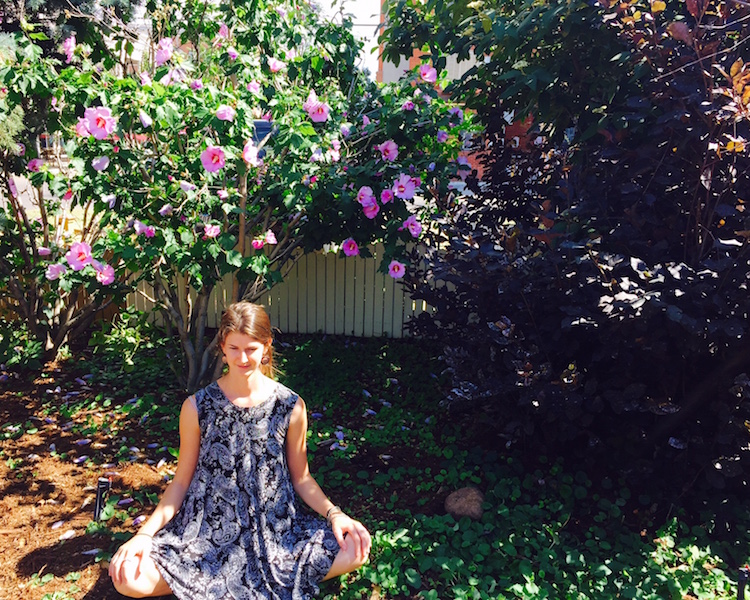“Pay attention to what’s happening in your mind. Remain aware of the breath as it enters and exits the body. Gently bring your attention back to the breath whenever you get distracted, without judgment—just remaining aware of each moment.”
These meditation instructions should sound familiar. They seem simple and direct. However, their simplicity glosses over a significant issue: What do we mean by attention and awareness? If we want to work skillfully with the mind in meditation, then we need a clear understanding of these terms—how they differ and how they work together. Only then can our meditation practice really take off.
Attention and Awareness
Think about consciousness for a moment. What we consciously experience are sights, sounds, smells and other external objects arising and passing away. So too, thoughts, feelings, moods and memories move through our internal landscape.
Looking a bit closer we notice our conscious experience comes in two different forms: attention and awareness. When we focus our attention on something, it takes center stage in our conscious experience. At the same time, we can remain more peripherally aware of things in the background. For example, right now your attention is focused on what you’re reading. Yet, you’re also most likely aware of other sights, sounds, and maybe a few thoughts, feelings or sensations in the periphery.
Let’s use vision as a helpful example to clarify. Try fixing your eyes on an external object. Notice that as you focus on the object, your peripheral vision takes in other information on the edges. This is exactly how attention and awareness work in daily life; we pay attention to some things while remaining peripherally aware of others. For instance, we may be listening intently with our attention to what our co-worker is saying. At the same time, we’re peripherally aware of the flavor of the tea we’re drinking, traffic noises in the background, and some passing thoughts about the ugly shirt he’s wearing.
Attention and peripheral awareness also do different things. Attention singles out some small part from the entire field of conscious experience in order to analyze and interpret it. On the other hand, peripheral awareness takes in the larger panorama. It’s more holistic, open and inclusive, and less conceptual. As attention isolates and hones in, awareness provides the overall context for experience—where we are, what’s happening around us, what we’re doing and why.
In meditation, we need to work with both attention and awareness. We do this by anchoring attention on an object like the breath, while at the same time sustaining awareness. Try it now. Close your eyes and bring your attention to the sensations of the breath at your nose. At the same time, remain aware of what you’re doing and your surroundings—the sounds in the room, bodily sensations, and thoughts and feelings arising and passing in the background. Discover this gentle balance for yourself.
Pitfalls
Rather than developing both, meditators often try to focus their attention intensely on the meditation object and exclude awareness of everything else. This type of stable, hyper-focused attention without awareness leads only to a state of blissful dullness: a complete dead end. But an equally common and harmful mistake is to cultivate awareness without focusing attention on anything—this is often done in certain “mindfulness” practices. By neglecting attention, this type of pure awareness practice will result mostly in mind-wandering, physical discomfort, drowsiness, and frustration.
By cultivating attention and awareness equally and working with them skillfully, we can make enjoyable and rapid progress on the meditative path. We can successfully overcome problems such as mind-wandering and dullness, as well as develop wonderful abilities like single-pointed attention and truly powerful mindfulness.
Attention, Awareness and the Problem of Mind Wandering
Let’s look at how attention and awareness work together in the familiar experience of mind-wandering. We sit down to meditate, placing our attention on the breath. But very quickly some thought captures our attention, such as a childhood memory of being at the beach. Then, a whole sequence of associated thoughts unfolds and, before you know it, we’re planning our next vacation to the Bahamas—even seeing the color of the mini-umbrella in our drink as we sit by the ocean.
What happened here? Basically attention got caught and dragged through a sequence of thoughts, and awareness has collapsed. That is, as attention went on vacation, our awareness of where we are (the meditation hall), what we wanted to do (attend to the breath), and why (to awaken for the sake of all beings) has faded.
Now, think about that critical moment when we suddenly realize the mind was wandering. Maybe we’ve been fantasizing for two, three, or even 10 minutes, but at some point we abruptly “wake up” to the fact that we’re no longer doing what we had intended to—pay attention to the breath. Notice how this moment is not under our conscious control. “You” didn’t make it happen, it just happened. It’s like when we suddenly remember a phone call we forgot to make or an un-mailed check—the thought just pops into our head.
This “wake up” call is actually another function that awareness performs; as attention hones in, awareness keeps watch and signals to attention when it’s gone off track. Awareness acts like an alert system, informing us when there is a divide between what we wanted to do (watch the breath) and what we’re actually doing (thinking about the Bahamas).
When awareness does inform us of mind-wandering, our natural tendency is to quickly return to the breath, often forcefully and with self-judgment. Every meditation teacher will tell you this is a bad idea. They’ll also tell you to return with gentleness and appreciation. But why? Because, by valuing this moment, you’re training the mind through positive reinforcement to become aware more quickly in the future. In other words, by taking a moment to enjoy and appreciate waking up from mind-wandering, by cherishing our mini-epiphany, we train awareness to alert us sooner and more frequently.
On the other hand, to become annoyed or self-critical at this moment is like scolding awareness for doing its job. We end up discouraging the very process that stops mind-wandering. It’s like telling awareness we don’t want to interrupt the mind-wandering.
Training the mind in meditation is like training a pet. Consistent, immediate positive reinforcement of behaviors we want is far more effective than punishing behaviors we don’t. As we keep repeating this technique, awareness will eventually intervene before attention completely forgets the meditation object. Over time, awareness will grow so strong that it’s always present, and you’ll never lose the meditation object as your focus of attention.
More to the Story
This is really just the beginning of how attention and awareness interact. We’re also only skimming the surface in explaining how to work with attention and awareness in meditation. However, it’s enough of a start to help you explore the differences in your practice.
Also, realize that everything we think, feel, say, or do from one moment to the next all ultimately depend on the interactions between attention and awareness. Mindfulness is the optimum interaction between the two. Therefore, by skillfully working with attention and awareness to cultivate mindfulness, we can change everything we think, feel, say, and do for the better.
In other words, we can completely transform who we are.
Relephant:
100 Days of Daily Meditation.
~
Author: Culadasa and Matthew Immergut
Editor: Travis May
Photo: elephant journal












Read 8 comments and reply